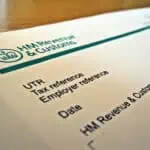Construction Industry Scheme Guide
Reading Time:
What is the Construction Industry Scheme?
CIS is a scheme of HMRC which applies to self-employed people and companies working in the Construction Industry. Under the CIS scheme, contractors are required to deduct tax at 20% from payments made to registered subcontractors or 30% from non-registered subcontractors.
The tax so deducted is required to be paid to HMRC by the contractor in the same way as PAYE and National Insurance by the 22nd of every month. The scheme does not apply to people working with contractors as their employees under the PAYE.
Under the CIS scheme, contractors must register under the CIS scheme while registration for subcontractors is optional. It is important to note that registration under the CIS scheme is a separate requirement from registering with HMRC for self-assessment.
What types of businesses are covered?
The scheme applies to all types of businesses that operate in the construction industry, such as:
- Companies
- Partnerships
- Self-employed individuals
The businesses mentioned above can be contractors, subcontractors, or both.
Provision of services covered by the CIS to private homeowners directly will not fall under the CIS scheme and hence no withholding tax will apply on payments made by the contractor to the subcontractor.
The Scheme’s Eligible Work Types
Construction work eligible under the scheme includes site preparation, alterations, dismantling, construction, repairs, decorating and demolition.
Not sure you are eligible? Find a complete list of what’s covered here.
Are there any exceptions?
You don’t need to sign up if you only do certain jobs, such as:
- Production and distribution of construction equipment, plant, and materials
- Hiring scaffolding
- Architecture & Surveying
- If you deliver materials
- Work on construction sites that have nothing to do with the building, like running a lunch room or site amenities.
Am I a contractor, subcontractor, or both?
As a first step, you need to ask yourself whether you are a contractor, subcontractor, or both, and if you answer “yes” to any of the following points, you will be classified as such.
You are considered a contractor if:

- You get construction work done by hiring a subcontractor and paying them.
- Your business doesn’t do construction, but in the year since you made your first payment, you’ve spent more than £3 million on construction.
- Contractors can also be government entities, local municipalities, and many other businesses typically called “clients” in the industry.
You are considered a subcontractor if:
- If you work for a contractor on a construction project outside the PAYE scheme.
You are considered both a contractor and a subcontractor if:
Many businesses pay others to do construction work, but they also get payment from other companies for their construction services. They must abide by the rules for both as a contractor and as a subcontractor.
Is the CIS scheme mandatory
Contractors are required to register for the scheme, while subcontractors have the option of doing so. If a subcontractor does not register, deductions will be taken from their payments at a higher rate.
- If the subcontractor is registered with CIS, the deduction is 20%.
- If the subcontractor is not registered with CIS, the deduction is 30%.
Contractor Guidance
If you are a contractor participating in the scheme, your responsibilities are as follows:
| Contractor | |
|---|---|
| Verify subcontractor | *You need to check with HMRC that a subcontractor is registered before paying them for construction work. This is to decide on the rate of deduction as being 20% or 30%. |
| Deducting payments | *Depending on the registration and tax status of the subcontractor, the contractor is required to withheld CIS tax from the labour only costs of the subcontractor’s invoice. The complete amount due might be paid to the subcontractor if the subcontractor is eligible for payment under gross payment status. |
| Returns | *Each month, you must send HMRC a full return of all payments made through the scheme, or you must tell HMRC that no payments were made. This will be included on the return: A. Subcontractors details B. Information on payments deductions C. A statement that subcontractors’ employment status was considered D. A statement that all subcontractors have been verified |
| Payments | *You must send the HMRC a payment for the money deducted from subcontractors’ pay each month or every three months. |
Subcontractor Guidance
Though it is optional for the subcontractor to register under the CIS but it is recommended to register under the CIS to avoid deduction of withholding tax at a higher rate.
If you are a subcontractor participating in the scheme, you pay advance tax to HMRC in respect of your income tax and National Insurance by way of deduction from your invoice by the contractor. This tax is adjusted against your overall tax liability on submission of your tax return.
The businesses mentioned above can be contractors, subcontractors, or both.
*To do this, you’ll need to prove to the HMRC that you meet certain requirements.
You should keep record of all monthly payments and deduction statements received from the contractor. If you have not been provided with these statements, you should ask the contractor to provide you with replacement copies. If the contractor has ceased trading and it is not possible for you to get copies of your monthly payments and deduction statements, you should inform HMRC.
Also Read: Reducing your Risk from Fraud Using Xero – Top Tips
Refund of overpaid tax under the CIS
The procedure of applying for a refund of overpaid tax under the CIS depends on the status of your businesses. If you are a sole trader or a partner in a partnership firm, you will need to file your tax return to HMRC to get the refund. This is to claim refund after the tax year. However, CIS refund can be claimed during the current tax year by filing in Form CIS40 However, refund via CIS40 Form is only claimed if you have stopped working in the CIS. There is no predetermined right to refund under the CIS from HMRC and refund will only be due if your overall tax liability for the tax year is less than what you already paid via CIS deductions.
If you are a limited company, you will need to claim CIS deductions via submission of your monthly payroll i.e., Full Payment Submission (FPS) and Employer Payment Summary (EPS) to HMRC. What happens is that HMRC will adjust your CIS deductions against your PAYE/NI liability and thus your liability towards HMRC is reduced.
Contractor & subcontractor registration
| Contractor | Subcontractor | |
|---|---|---|
| When to register for CIS | *When hiring and paying your first subcontractor, whether gross or net. *Registration is compulsory. | *If you are going to work in the construction industry or if your business or company is going to do so. *Registration is optional. |
| How to register for CIS | To register as a contractor, follow the steps for setting up as a new employer. *To register as a new employer, you will need your Government Gateway user ID and password, your National Insurance Number, your UTR and your business name. | |
| Sign up as a sole trader | You can sign up for CIS online if you are a sole trader and already have a: 1. UTR 2. Government Gateway user ID and password When you sign up, you can make a user ID if you don’t already have one. *If you don’t have a UTR, sign up for Self-Assessment as a new business and select “working as a subcontractor” when asked. You will be signed up for both CIS and Self-Assessment at the same time. | |
| Sign up as a different type of business | *Fill out the online form for either a limited company or a partnership. *The partnership will be registered separately from your registration as a sole trader by HMRC and will need the UTR and trading name of the partnership. | |
| You live outside the U.K. | *If you’re a subcontractor who lives outside the UK but works on construction projects in the UK, you should still sign up for CIS. | |
| What’s the next step? | *HMRC will establish a Contractor Scheme (and a PAYE Scheme if you have requested it) and provide you with sources of information. | *HMRC will confirm your registration by mail and provide instructions on what data must be provided to contractors before they can be paid. |
Penalties
HMRC will charge initial penalty of £100 if your CIS return is late by one day. The amount of penalty increases with time and depending on the nature of non-compliance. The penalty will be greater of £300 or 5 per cent of any deductions shown on the return if return is late by 12 months. Similarly, HMRC will charge penalties for incomplete and incorrect monthly returns as well as missing records for up to £3000.
Conclusion
The CIS was set up to combat tax avoidance in the construction industry. The scheme sets out responsibilities for the contractors with regard to paying subcontractors in the construction industry. There are strict filing requirements and penalties for non-compliance.
Fusion Accountants are a team of experts specialising in CIS. Here at Fusion Accountants, we have helped many sole traders, partnerships and limited companies operating in the construction industry to not only remain compliant with CIS rules and avoid penalties but also helped them in their cash flows getting the right amount of refunds from HMRC for their CIS refunds; contact us today to find out how we can help.
Also Read: How to prepare Year-end accounts for limited companies






